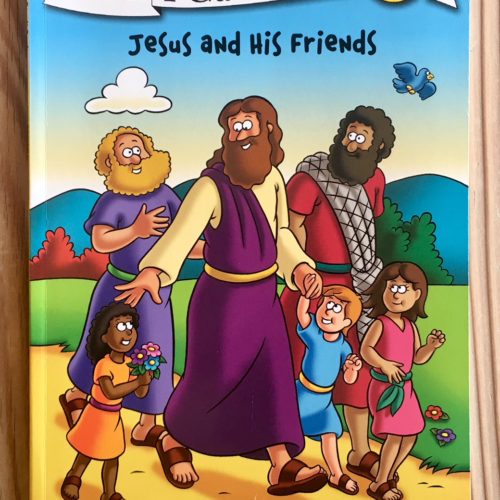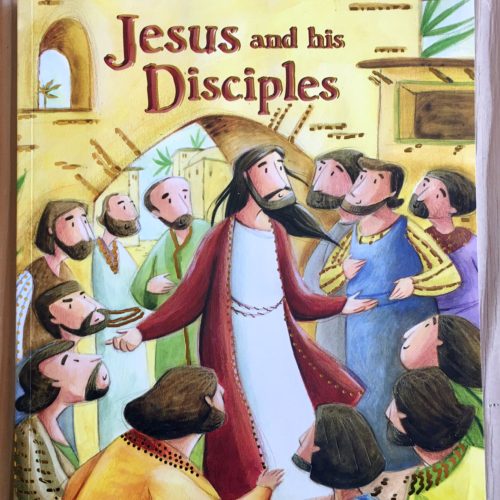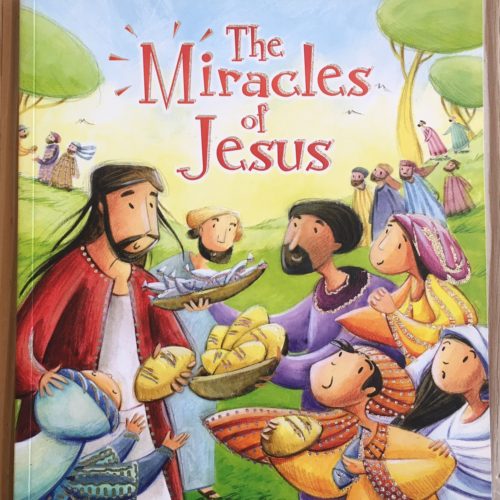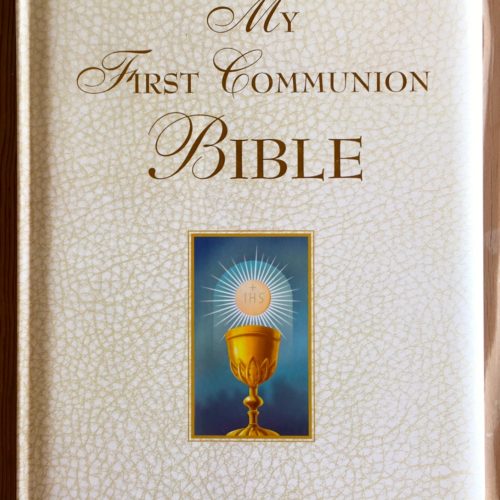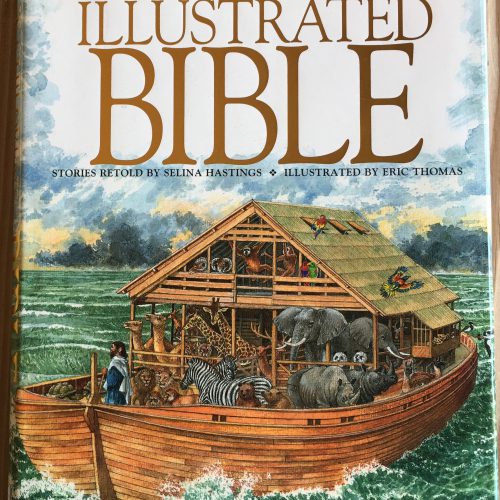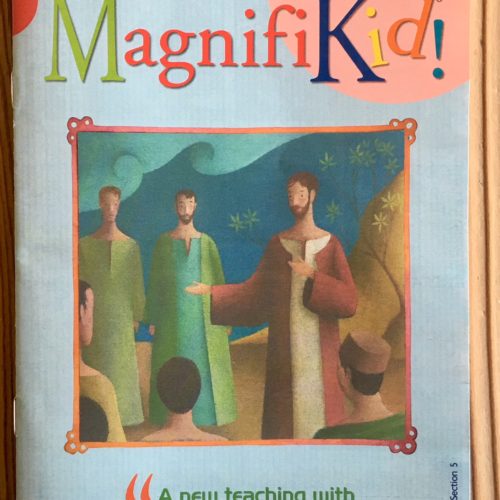“‘Rejoice with me because I have found my lost sheep.’” (Luke 15:4-6)
“I tell you, in just the same way there will be more joy in heaven over one sinner who repents than over ninety-nine righteous people who have no need of repentance.” Jesus
Source: USCCB.org
“Jesus told us this story to help his followers to understand that God loves us and forgives us. He wanted us to know that each one of us is very special to God.”
Believe Celebrate Live Reconciliation Page 24
Learning About Jesus
“People could tell that there was something different about Jesus. He spoke with authority. He did not teach like a scribe who knows things about God, but like the Son who actually knows God, his Father.” Source: Lisa Reno, Magnifikid! January 28, 2018 Vol 15. Part 2. Section 5. Page 3
A scribe was a person who wrote for other people, who did not know how to read, write, or spell. They also were the scholars who copied and wrote down the text of the Torah, which we call the “Old Testament.” In Judea, where Jesus lived, scribes had a powerful position:
“[Scribes were] men specially trained in writing, and thus influential as interpreters and teachers of the Law, and agents of the rulers...The Gospels usually portray scribes (along with chief priests, elders, and/or Pharisees) as opponents of Jesus who actively sought his death (Mark 11:27).” Source: Catholic-Resources.org
Jesus used different ways to talk to and teach his followers and disciples. He told stories, called “parables” which used “comparison, or a parallel, by which one thing is used to illustrate another.” Jesus talked to people about the shepherd who had lost a sheep and left ninety-nine sheep to find the one lost animal. This is a parable because it uses the parallel of a shepherd to God, who looks out for and loves each of us. Source: Catholic.com
Jesus also performed “miracles” which are: “Wonders performed by supernatural power as signs of some special mission or gift and explicitly ascribed to God.” When Jesus fed five thousand people with five leaves of bread and two fish, it was a miracle. Catholic.com
Jesus did other acts including healing the sick, raising the dead, changing water into wine, walking on water, and driving evil spirits out of people. All of these actions helped his followers and disciples understand that He was God, the Son.
There are easy and helpful books for young children that explain these actions with cartoon-like characters or wonderful illustrations. I remember my mom not wanting me and my siblings to read comic books as a children, because they weren’t educational enough. It wasn’t repressive, she simply wanted us to stick to “real” books. However, educators now know that books with pictures can help students of all levels understand material quickly. For visual learners of all ages, “A picture is worth a thousand words.” Here are books about Jesus for students of various ages, starting with books for emergent readers on upward to about twelve years old, that tell the stories with pictures, photos, and cartoon characters.
Learning About Jesus through Reading and Illustrations
Click on image to enlarge.
The Gospel for Sunday, January 28, 2018
and on the sabbath Jesus entered the synagogue and taught.
The people were astonished at his teaching,
for he taught them as one having authority and not as the scribes.
In their synagogue was a man with an unclean spirit;
he cried out, “What have you to do with us, Jesus of Nazareth?
Have you come to destroy us?
I know who you are—the Holy One of God!”
Jesus rebuked him and said,
“Quiet! Come out of him!”
The unclean spirit convulsed him and with a loud cry came out of him.
All were amazed and asked one another,
“What is this?
A new teaching with authority.
He commands even the unclean spirits and they obey him.”
Capernaum–The Home of Jesus and Peter
In his home town of Capernaum, in the area of Galilee, Jesus performed miracles, healings, and other acts that helped the followers and disciples understand that He was God the Son. My son and I visited the stone remains of the home of Peter and saw the “Mensa Christi” which means, “Christ’s Table.” The table is where Jesus, after the Ascension, returns to his disciples and eats fish with Peter at this location. We walked a few yards from the church out to the shore of the Sea of Galilee–a fresh water lake, not an ocean–and touched the water. It was a powerful experience to visualize Christ perhaps doing the same thing.
The Conversion of Saul
This is an excerpt from the story of Saul, a Jew, who was persecuting other Jews for being followers of Christ. He has a huge turn-around when he is touched by the light of the Lord. He converts. This means that he changes his thoughts, actions, and beliefs and actually becomes “the Apostle (meaning ‘sent one’) to the Gentiles (non-Jews.)” He is then called Paul. Through conversion, reconciliation, forgiveness, and grace, Paul becomes the great messenger in spreading the Good News of the Gospel and is a saint in heaven. Source: BustedHalo.com
Conversion also means leaving one religion, or going from not having any religion, to becoming something new. I converted from one religion to be a Catholic. I am therefore, a “convert” to Catholicism. A convert has full status as a member of the church.
Here is the story of Saul’s conversion: Saul was a Jew who hated the teachings of Jesus and the followers of the “Way of the Lord.” He attacked them on the road to the Syrian city called Damascus, as they fled Jerusalem, and got permission to arrest any man or woman who was a follower of Christ. “As Saul was coming near the city of Damascus, suddenly a light from the sky flashed around him. He fell to the ground and heard a voice saying,
Jesus: “‘Saul, Saul! Why do you persecute me?’
Saul: ‘Who are you Lord?’
Jesus: ‘I am Jesus, who you persecute,’ the voice said. ‘But get up and into the city, where you will be told what you must do.'”
Saul was left blind and people had to lead him by the hand into town. A man named Ananias was told by Jesus to go to Saul and tell him that the Lord had a plan for him. Ananias went to Saul, placed his hands upon him and said, “‘Brother Saul,’ he said,’The Lord has sent me–Jesus himself, who appeared to you on the road as you were coming here. He sent me so that you might see again and be filled with the Holy Spirit.'”
After that, Saul had things like “fish scales” fall from his eyes and he was able to see again. “He stood up and was baptized.”
Source: The Catholic Children’s Bible Page 1728
Here are some questions to discuss with your children.
Were you surprised Jesus forgave Saul for persecuting him and his followers? Forgiveness
Do you think Saul will stop what he has been doing and change his ways, from hearing the Lord? Repent
If Saul told Jesus he was sorry and wanted to make amends do you imagine God the Son would say “Come back to Me”? Reconciliation
Saul was baptized by the Holy Spirit, were his sins forgiven in that moment? Yes! “God’s forgiveness is in the Sacrament of Baptism.”
What is the word for the gift Jesus gave Saul? Grace
Watercolor Art for “Miracles”
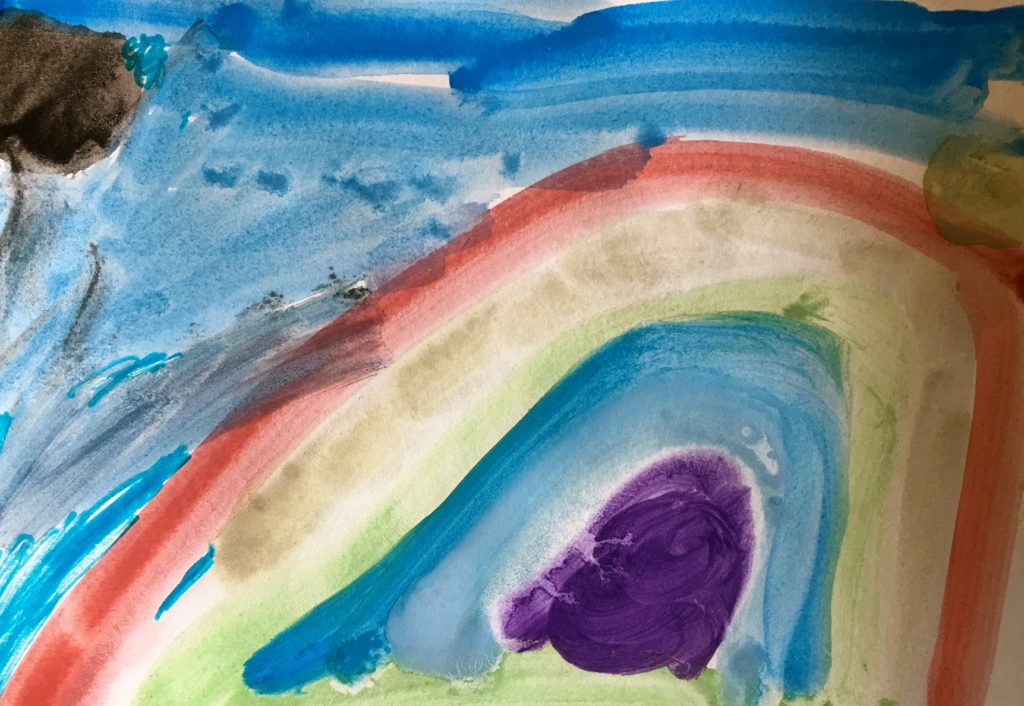
Invite your child to use their imagination and paint a picture –can be abstract– of one of the miracles performed by Jesus.
A good one to try might be the rough Sea of Galilee, where Jesus walked out to Peter in the boat.
Here are materials for a beautiful watercolor experience:
Suggestions for Homework
Please read “The Faith of the Centurion” in The Catholic Book of Bible Stories, pages 124-126. (Matthew 8:5-13) (or in your own Catholic Children’s Bible, or directly from your family Bible.) Also, read page 127, “Faith to Grow” and “Prayer” as we learn more about Jesus, his disciples, and the “Way of the Lord”; and please read “Adam and Eve Disobey God” (Genesis 2-3) pages 13-14.
Talk about about the rules your family has. Page 208 has a list of questions:
1. “How do these rules show your parents’ love for you?”
2. “How do your rules keep you safe?”
3. “Make a list of your family rules and decorate it with colorful designs. Hang it where everyone can see.”
Read “The Word of the Lord” on pages 24-25, and “Reconciliation” on pages 26-27 of Believe Celebrate Live Reconciliation.


